The MCGS6.2 Universal Edition is a dozens of software development elites in Beijing Kunlun. It lasted for a whole year and was the result of hard work. The MCGS6.2 Universal Edition is friendly in terms of interface, powerful in internal functions, and expandable in system. Sexuality, user usability and design concept have a qualitative leap. It is an epoch-making product of the domestic configuration software industry, and will surely lead the domestic configuration software to a new level.
Features·All Chinese visual configuration software, simple and generous, easy to use and flexible
Complete Chinese online help system and multimedia tutorials·
Real 32-bit program, support multi-tasking, multi-threading, running on Win95/98/NT/2000 platform
Provides nearly one hundred drawing tools and basic icons to quickly construct a graphical interface
Supports more than 700 kinds of common equipments at home and abroad, such as data acquisition boards, intelligent modules, smart meters, PLCs, inverters, and network equipment.
Supports various industrial control curves such as temperature control curve, plan curve, real-time curve, historical curve, and XY curve
Support ODBC interface, can be interconnected with relational databases such as SQL Server, Oracle, Access, etc.
Support OPC interface, DDE interface and OLE technology, which can be easily interconnected with other programs and devices.
Provides a variety of animations such as progressive color, rotation animation, transparent bitmap, and flow block to achieve good animation effects.
Thousands of beautiful library components to ensure a fast and beautiful animation
Powerful network data synchronization and network database synchronization to ensure the perfect combination of multiple systems
The perfect network architecture can support the latest popular communication methods, including telephone communication network, broadband communication network, ISDN communication network, GPRS communication network and wireless communication network.
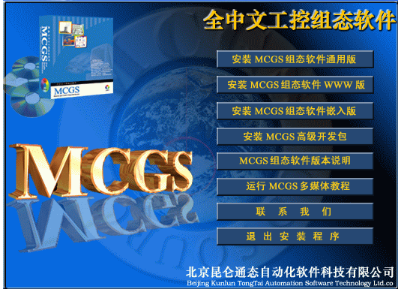
MCGS embedded version is developed on the basis of MCGS general version, which is specially applied to the configuration software of embedded computer monitoring system. The MCGS embedded version includes two parts: configuration environment and operating environment. Its configuration environment can be based on Microsoft. Running on various 32-bit Windows platforms, the operating environment runs in the real-time multitasking embedded operating system WindowsCE. A dedicated computer system that is adapted to the application system's comprehensive requirements for functions, reliability, cost, size, and power consumption. Through the collection and processing of on-site data, the program of solving practical engineering problems is provided to users in various ways such as animation display, alarm processing, flow control and report output, and has wide application in the field of automation. In addition, the MCGS embedded version also has a simulation running environment for simulating the configured project to facilitate user debugging of the configuration process.
Main functions of MCGS embedded version configuration softwareSimple and flexible visual operation interface. The MCGS embedded version adopts a full Chinese, visual, and window-oriented development interface, which is in line with Chinese usage habits and requirements. The graphical interface of the user running system is constructed in the form of a window, so that the configuration of the MCGS embedded version is simple and intuitive, and flexible.
Real-time and good parallel processing performance. The MCGS embedded version is a true 32-bit system, making full use of the multi-task, priority-based time-sharing function of the 32-bit Windows CE operating platform. The key tasks and real-time nature of real-time in engineering operations are not based on threads. Strong non-critical tasks for time-sharing parallel processing make it possible for embedded PCs to be widely used in engineering measurement and control. For example, when dealing with key tasks such as data acquisition, device driver, and exception handling, the MCGS embedded version can be inserted into a non-critical work such as printing data during the host runtime cycle to achieve parallel processing.
Rich and vivid multimedia picture. The MCGS embedded version provides operators with timely information on status, quality and abnormal alarms in the system in the form of images, icons, reports, curves, etc.; with size changes, color changes, blinking, moving flips, etc. A means to enhance the dynamic display effect of the picture; define corresponding state attributes for the picture element and the icon object to achieve an animation effect. The MCGS embedded version also provides users with a rich set of animation components, each of which corresponds to a specific animation function.
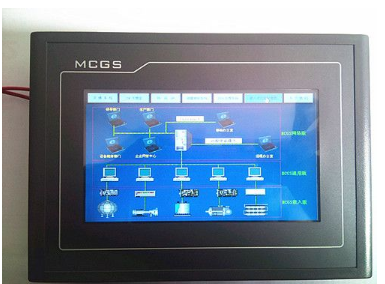
Perfect security mechanism. The MCGS embedded version provides a good security mechanism and can set different operating permissions for multiple different levels of users. In addition, the MCGS Embedded Edition provides engineering password functionality to protect the results of configuration developers.
Powerful network features. MCGS embedded version has powerful network communication function, supports serial communication, Modem serial communication, Ethernet TCP/IP communication, not only can realize remote data transmission conveniently and quickly, but also can be combined with network version through web browsing function in the whole enterprise. In-scope browsing monitors all production information and enables integration of equipment management and enterprise management.
A variety of alarm functions. MCGS embedded version provides a variety of different alarm modes, with a rich alarm type, which is convenient for users to set alarms, and the system can display alarm information in real time and respond to alarm data, which provides a strong guarantee for safe and reliable production and operation of industrial sites.
The real-time database provides great convenience for user step-by-step configuration. The MCGS embedded version consists of five parts: main control window, device window, user window, real-time database and running strategy. The real-time database is a data processing center, which is the common data area of ​​each part of the system and its various functional components. The core of the entire system. Each component independently inputs and outputs data to the real-time database and completes its own error control. When generating the user application system, each part can be configured separately, built independently, and irrelevant.
Support a variety of hardware devices to achieve "device-independent". The MCGS embedded version sets the device toolbox for the characteristics of the external device, defines a variety of device components, establishes the connection relationship between the system and the external device, assigns related attributes, and implements driving and control of the external device. The user can easily select various device components in the device toolbox. Different devices correspond to different components, all device components are connected through a real-time database, and they are independent of each other when they are established, that is, the operation or modification of one component does not affect the structure of other components and the entire system, so MCGS The embedded version is a "device-independent" system, and users don't have to worry about local changes due to external devices, affecting the entire system.
Convenient control of complex operational processes. The MCGS embedded version opens up the “Run Strategy†window. Users can select the policy components of various conditions and functions provided by the system, construct a multi-branch application with a graphical method and a simple class Basic language, according to the set conditions and Order, operate external devices, control windows to open or close, exchange data with real-time database, freely and accurately control the running process, and also create new policy components by users to expand the system's functions.
Good maintainability. The MCGS embedded version system consists of five functional modules. The main functional modules are constructed in the form of components. Different components have different functions and are independent. The three basic types of components (device components, animation components, and strategy components) complete all three of the MCGS embedded system (device driver, animation display, and process control).
Using a self-built file system to manage data storage, the system is more reliable. Since the MCGS embedded version no longer uses the ACCESS database to store data, but uses a self-built file system to manage data storage, the MCGS embedded version is more reliable than the MCGS Universal Edition, in the case of abnormal power loss. There will be no data loss.
The object component library is set up, and the configuration work is simple and convenient. The object component library is actually a library for classifying and storing various configuration objects. During configuration, the well-prepared objects (including graphic objects, window objects, policy objects, and bitmap files) can be stored in the library as components, or various objects in the component library can be taken out, directly for the current As the project is used, as the work is accumulated, the object component library will be expanded and enriched. This solves the problem of accumulation and reuse of configuration results. The configuration work will become easier and more convenient.
In short, the MCGS embedded version configuration software has powerful functions, and is easy to operate and easy to learn. The general engineering staff can quickly master the design and operation of most engineering projects after a short training period. At the same time, the MCGS embedded version configuration software can avoid complex embedded software and hardware problems, and concentrate on solving the engineering problem itself. According to the needs and characteristics of the engineering operation, the configuration configures high performance, high reliability and Highly specialized industrial control monitoring system.
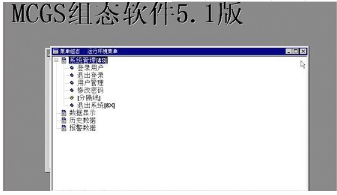
1. The general version is mainly used on the PC. You can design the screen and project on the PC, and you can call some programs of the PC. Can also be used on the industrial computer.
2, embedded version only software installed on the PC to do engineering, design screen, you can also simulate running on the PC. However, the project can only be used on the touch screen of the MCGS, namely the TPC series touch screen.
3, the above friend said that the old version of the embedded version, you must first install the general version. 6.8 embedded version of the online official website has a complete installation package.
Although the embedded version and the general version have many similarities, the embedded version and the general version are suitable for different control requirements, so there is a significant difference between the two.
Compared with the general version, the performance is different: l The function is different: although the embedded version also integrates the human-computer interaction interface, the embedded version is designed for real-time control and is applied to the control system with high real-time requirements. The general-purpose configuration software is mainly used in monitoring systems with low real-time requirements. Its main function is to do monitoring and data background processing, such as animation display, report, etc. Of course, for the complete control system, both Is indispensable;
Different operating environments: the embedded version runs on the embedded real-time multitasking operating system WindowsCE; the general version runs on Microsoft Windows 95/98/Me/NT/2000 and other operating systems;
The architecture is different: the configuration of the embedded version and the configuration of the general version are performed in a general computer environment, but the configuration environment and the operating environment of the embedded version are separate, and the configured project in the configuration environment is required. Download to the embedded system to run, and the general version of the configuration environment and operating environment is in a system.
Compared with the universal version, the new features of the embedded version include: l the use of the simulation environment, the use of the embedded version of the simulation environment CEEMU. exe, to solve the problem of the user must be connected to the embedded system when configuring the user. The user can view the aesthetics of the configured interface, the implementation of the function, and the reasonableness of the performance in the simulation environment;
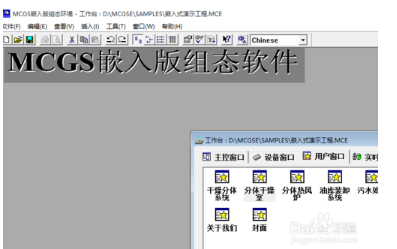
The embedded system function can perform operations such as reading and writing memory, serial port parameter setting, and disk information reading on the embedded system through the function call;
The project download configuration can use the serial port or TCP/IP to communicate with the lower computer, and can monitor the project download status;
l Interrupt policy, which is invoked when hardware generates an interrupt request. l Features that are not available in the embedded version compared to the generic version include:
File playback, save data processing, multi-line text, format text, set time, condition curve, relative curve, general bar graph in animation component;
Audio output in the strategy component, Excel report output, alarm information browsing, save data copy, save data browsing, modify database, save data extraction, set time range component;
Can not be used in the script function: Run environment operation function! SetActiveX,! CallBackSvr, the data object operation function! GetEventDT,! GetEventT,! GetEventP,! DelSaveDat, system operation! EnableDDEConnect,! EnableDDEInput,! EnableDDEOutput,! DDEReconnect,! ShowDataBackup,! Navigate,! Shell,! AppActive,! TerminateApplication,! Winhelp, ODBC database functions, recipe operations;
Data post-processing, including: Access, ODBC database access function;
Remote monitoring.
8 port USB charger contains a 120W high -power charger that can be charged quickly. At the same time, this 8 -port USB charger built -in independent IC chip can ensure that your device is automatically generated after connecting the best current; The charger is portable, the mini version of the USB charger, when you go out to travel, put it in a trunk or backpack, you will not take up a lot of space. Petite and lightweight saving a lot of space for you. No matter where you go, it will not affect you. Traveling is actual available.
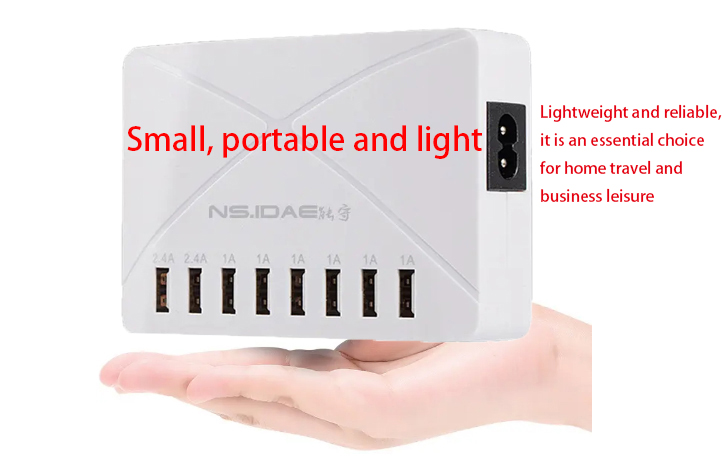
8Port Usb Charger,Usb Charger,8-Port Usb Charger,Power Adapter Wall Quick Charge
shenzhen ns-idae technology co.,ltd , https://www.szbestchargers.com